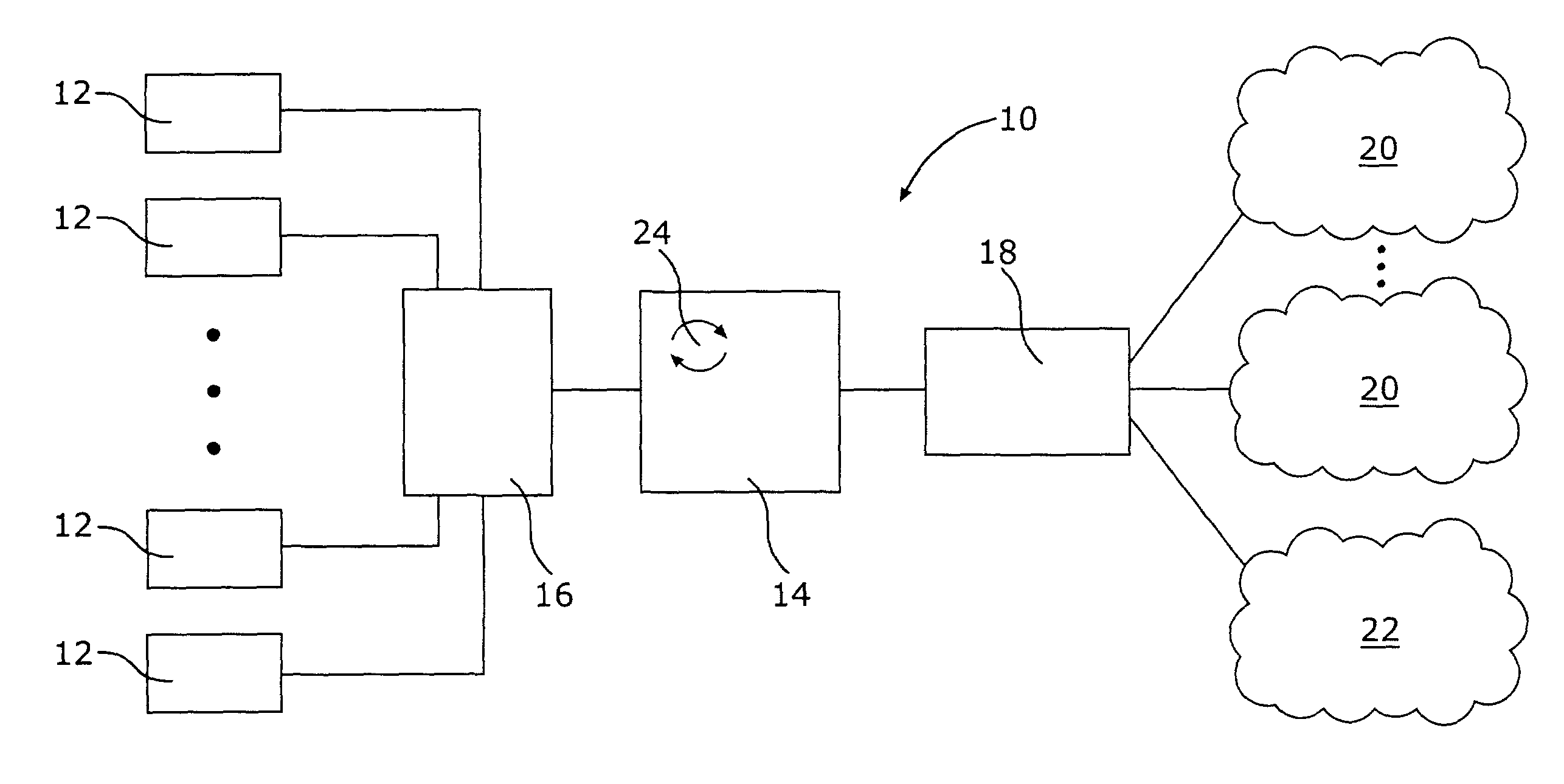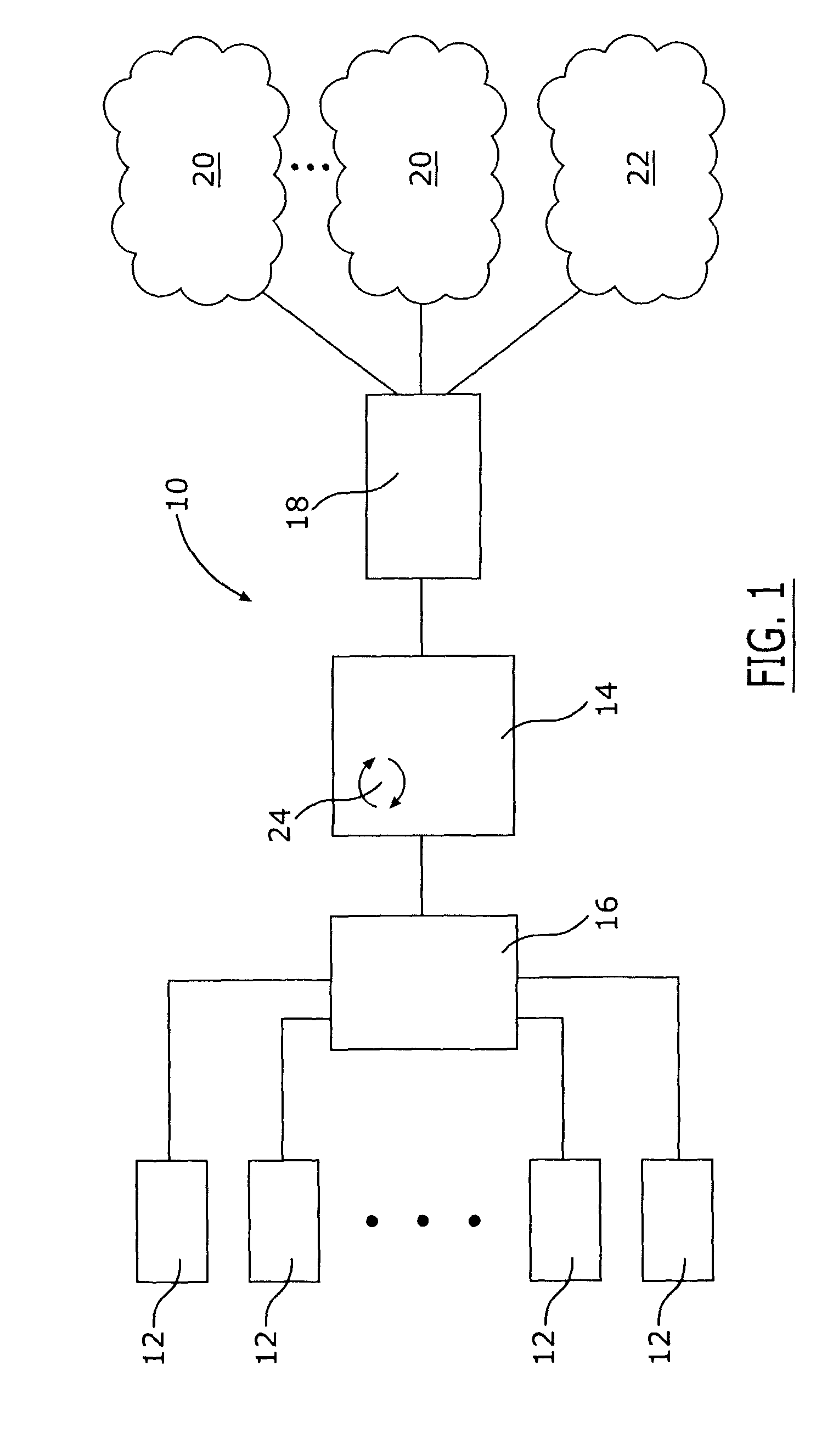[0014]In addition, the intelligent
network address translation system of the present invention provides for a heightened
IP address reusability factor. This is apparent because the system provides for different hosts connecting to different network destinations to use the same public IP address, concurrently. The system maps assigned public IP addresses to destination addresses and only denies re-using the same public IP address if subsequent network users are connecting to the same destination address. Another
advantage of the present invention is that translation address allocation does not depend on the order in which a network host accesses the system and the order of entry does not determine if a network host is capable of creating a Virtual
Private Network (VPN) connection. In a basic NAT
type system the amount of IP addresses in the public IP
pool will dictate how many network users can be assigned a NAT address. For example, if the public IP
pool consists of 100 IP addresses, the first 100 network users that access the system and warrant a network address translation will be assigned the addressed. As such, the 101st user will be denied network address translation. In the present invention, two factors prevent the system denying network address translation based on the order in which a network user accesses the system. First, network users that access the system may not require a unique address from the public IP pool (i.e., they may only require assignment of the default IP address). Second, in those instances in which a unique IP address is required, IP addresses can be re-used as long as the network user is attempting to access a different destination address than a previously connected network user.
[0015]In one embodiment of the invention, a method for network address translation in a communication network includes the steps of determining a data packet type for a data packet being communicated from private hosts to
public network services, determining if the data packet type requires assigning an IP address from available public IP addresses and assigning the data packet an IP address from the available public IP addresses if a determination is made that the packet type requires such. Lastly the method includes, translating the address of the data packet to the assigned IP address.
[0016]The method described above may further include the step of assigning the data packet a default public IP address and a source port if a determination is made that the data packet type does not require assigning an IP address from available public IP addresses. The method may also include the steps of storing the assigned IP address in an address binding (i.e., correlation) table that maps the assigned IP address to a data packet destination address and / or the step of storing the assigned IP address in a correlation table that maps the assigned IP address to the
private IP address. The storage steps allow for outgoing data packets to be checked for previous network address translation
processing, thus hastening
data transmission and provides for an effective IP address
reusability factor.
[0017]In an alternate embodiment of the invention, a method for network address translation in a communications network is defined as, the method including the steps of analyzing each outgoing data packets to determine data packet type, determining, from
multiple modes of network address translation, a mode of network address translation for each outgoing data packets based upon the determined data packet type of each outgoing data packet and performing network address translation on outgoing data packets based on the determined mode of network translation. The method allows for the
modes of network address translation to include the basic NAT-type translation method of assigning a public IP address from a public IP
address pool or the NAPT-type translation the method of assigning a default public IP address and a related source port.
[0018]The invention is also defined by a network address translator system for providing network address translation in a communications network. The system includes an address selector module that analyzes the data packet type of outgoing data packets to determine a mode of network address translation and selects a translation address based on the determined mode of network address translation and a translation module in communication with the outgoing connection lookup module that performs network address translation on outgoing data packets using the selected translation address.
[0019]Additionally, the network address translator system may include an outgoing connection lookup module that communicates with a connection
lookup table to determine if outgoing data packets have previously undergone network address translation and / or a connection creation routine that compiles translation information, including the assigned network address translation for outgoing data packets, and stores the compiled translation information in the connection
lookup table. In order to reverse translate the incoming data packets, the system may include a connection
lookup table to determine connection parameters for incoming data packets and a reverse translator module that performs reverse network address translation on incoming data packets based on the determined connection parameters in the connection lookup table.
 Login to View More
Login to View More  Login to View More
Login to View More 


